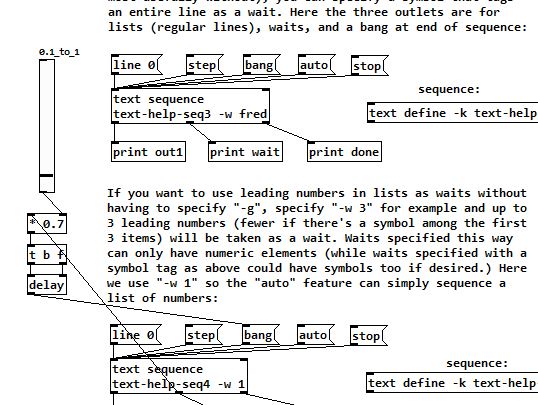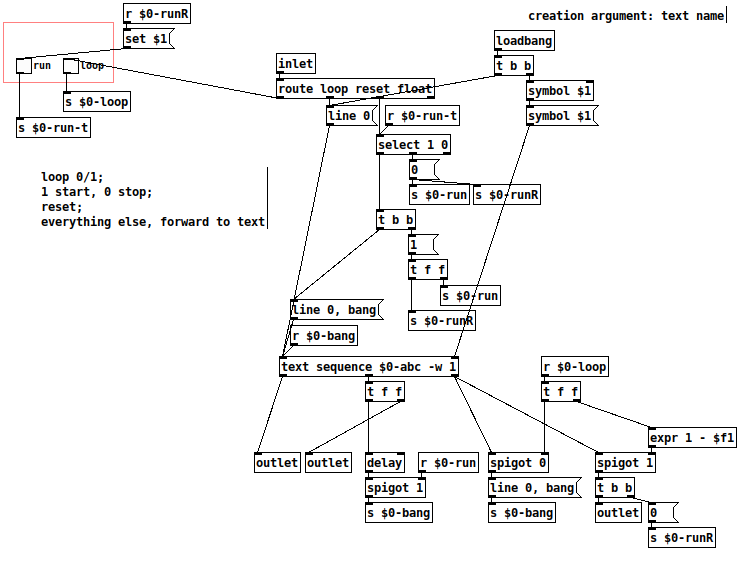@whale-av Ah, right -- I didn't explain clearly. So maybe it's time to "begin at the beginning."
Where I'm coming from: In SuperCollider, it's easy to express the idea of an event now, with a duration of 100 ms (time until the next event), with the gate open for the first 40% of that time:
(midinote: 60, dur: 0.1, legato: 0.4)
... producing control messages (0.04 is indeed 40% of 0.1 sec):
[ 0.0, [ 9, default, 1000, 0, 1, out, 0, freq, 261.6255653006, amp, 0.1, pan, 0.0 ] ]
[ 0.04, [ 15, 1000, gate, 0 ] ]
That is, an event is conceived as a span of time, with the action occurring at the beginning of the time span.
By contrast:
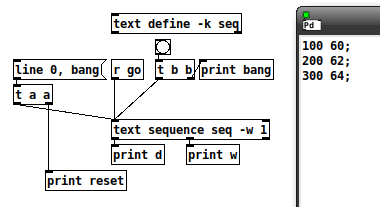
reset: line 0
reset: bang
w: 100
What is the data point that should occur at the beginning of this 100 ms span?
OK, never mind, continuing...
bang: bang
d: 60
w: 200
Ohhhh... it's really 200 ms for midinote 60. But you didn't know that at the time the data came out of the left outlet. Normally we assume right to left, but at the moment of requesting the next data from the sequencer, it's actually left to right.
bang: bang
d: 62
w: 300
bang: bang
d: 64
And... (the really unfortunate flaw in this design) -- how long is 64's time span? You... don't know. It's undefined. (You can add a duration without a data value at the end -- and I'll do that for the rest of the examples -- but... I'm going to have to explain this to students in a couple of days... if there are any clever ones in the lot, they will ask "Why is this note's duration on the next line? Why do we need an extra line?")
Let's try packing them:
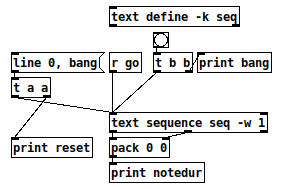
reset: line 0
reset: bang
bang: bang
notedur: 60 100
bang: bang
notedur: 62 200
bang: bang
notedur: 64 300
bang: bang
notedur: 64 400 (this is with "400;" at the end of the seq)
bang: bang
Now, that "looks" like what I said I wanted -- but it's misleading, because the actual amount of time between 60 100 and 62 200 is 200 ms. The notes will be too short.
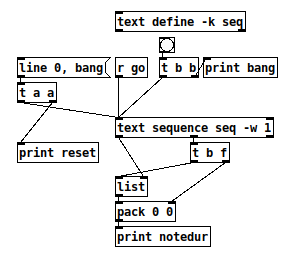
reset: line 0
reset: bang
notedur: 64 100 -- "64" is leftover data
bang: bang
notedur: 60 200 -- OK, matches sound
bang: bang
notedur: 62 300 -- OK
bang: bang
notedur: 64 400 -- OK
bang: bang
So the last version is closer -- just needs a little logic to suppress the first output (which I did in the abstraction).
Then, to run it as a sequence, it just needs [t b f f] coming from the wait outlet, and one of the f's goes to [delay] --> [s go]. So the completed 40% patch (minus first-row suppression) looks like this:
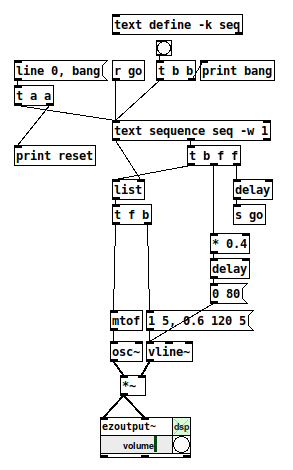
I guess part of my point is that it took me almost two hours to work this out yesterday... but sequencing is a basic function of any music environment... isn't there some way to make it simpler to handle the very common musical conception of a note with a (subsequent) duration? (Pd already has exactly that conception -- [makenote] -- so, why is the sequencer at odds with [makenote]?)
hjh


